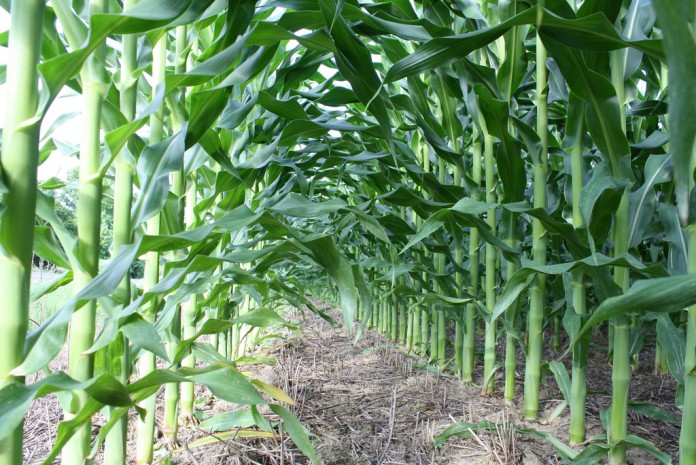
Not too much doubt what the grain markets were trading June 14. Rain across the drought-stricken western Corn Belt over the weekend had prices slumping on the Chicago Board of Trade.
Early trading had July corn futures down as much as 31 cents. The December corn futures low was at $5.701⁄2, down 371⁄2 cents. November soybean futures had a low in early trading at $13.811⁄4, down 55 cents.
And yet, the reaction of farmers in North Dakota could be summed up with an old joke: “What’s a couple of inches of rain? A good start!
Unimpressed
While the traders were excited by the weather, observers on my June 14 conference call were unimpressed. They were looking at weather forecasts for more dry weather, saying the rain amounts were mostly lower than hoped, and worrying that the condition of the crops so far is depressing.
One talked about getting 15-bushel wheat, if things got better. Others talked about the hot temperatures they had been seeing curling up corn that is already stunted in development. The only outlier was from southeast Iowa where there is replanting because of too much hard rain, then blistering temperatures.
Now, remember that my pappy always said nothing is ever any worse than a farmer says it is. Still, the belief of this group was that the rain in places ended this weather market, but there must be one more coming, based on the conditions they are seeing.
While traders are shorting the markets, farmers are discussing option strategies to protect them if they can’t deliver the new crop bushels they have already sold on the rally. This is for now mostly about the wheat crop, which is in drastic condition in the Pacific Northwest and in bad condition in the Dakotas and part of Minnesota.
In fact, the market was seeing some follow-through the morning of June 15. July corn futures, which closed down over 25 cents, were down almost eight in early trading. December futures were down $131⁄4 after a close that was down $281⁄2 cents June 14.
This may be because the U.S. Department of Agriculture’s report of crop condition from June 14 came out a little better than expected. The good and excellent was reported at 71%, down 1% from last week, but a couple better than expected. This does not jibe with anecdotal reports I heard June 14, and I expect the condition to be worse in next week’s report.
Withstanding the weather
As more talk of condition hits the market, prices will likely turn around, assuming the current dry forecasts hold up. Soybean prices the morning of June 15 were not down as much as corn prices.
The biggest reason for this is the belief that the soybeans are not as adversely affected by early weather. They have demonstrated the ability to shake off bad weather and thrive if conditions are good in August.
The corn, meanwhile, is a different story. The girth of the eventual ear is determined between three-leaf and five-leaf stage. We are already there for much of the crop. Early corn weather affects corn yields disproportionately.
Soybeans on June 15 were down seven and a half cents in the all-important November futures. It is notable that last week the July soybeans lost 75 cents while the November were actually up three cents. The spread between old and new crop is now less than a buck.
The excitement is more and more in the November because of new crop production concerns, and because cash traders have, in many cases, switched basis to the November contract. This is very early, but it comes as the buyers worry that they will struggle to buy any beans, and if they own any this summer they want them hedged in the November for fear of volatility in that month’s futures.
Old versus new
The last week provides a good example of how the old and new will trade differently. USDA reports June 10 changed some numbers, but the big result of the reports was that we expect our supplies of corn and beans to be getting even tighter. Year 2021 ending stocks are now estimated at 1.1 billion, two hundred million less than in the report a couple of months ago.
This comes as exports are now expected to increase, and the ethanol grind will increase as business and deferred recreational travel miles increase.
At the same time, USDA now expects the next crop, from 2021-2022, to end up with just 1.35 billion bushels. Remember, we now see one billion bushels as bare pipeline supply, so this is tight, and will remain tight as far as we can see.
The situation is soybeans has more to do with a record crush this year. The result is low stocks for this year, and continued tightness next year. Both mean we expect this “beans in the teens” market to have reason to continue.
Late summer weather will determine the size of the bean crop and the magnitude of prices.












